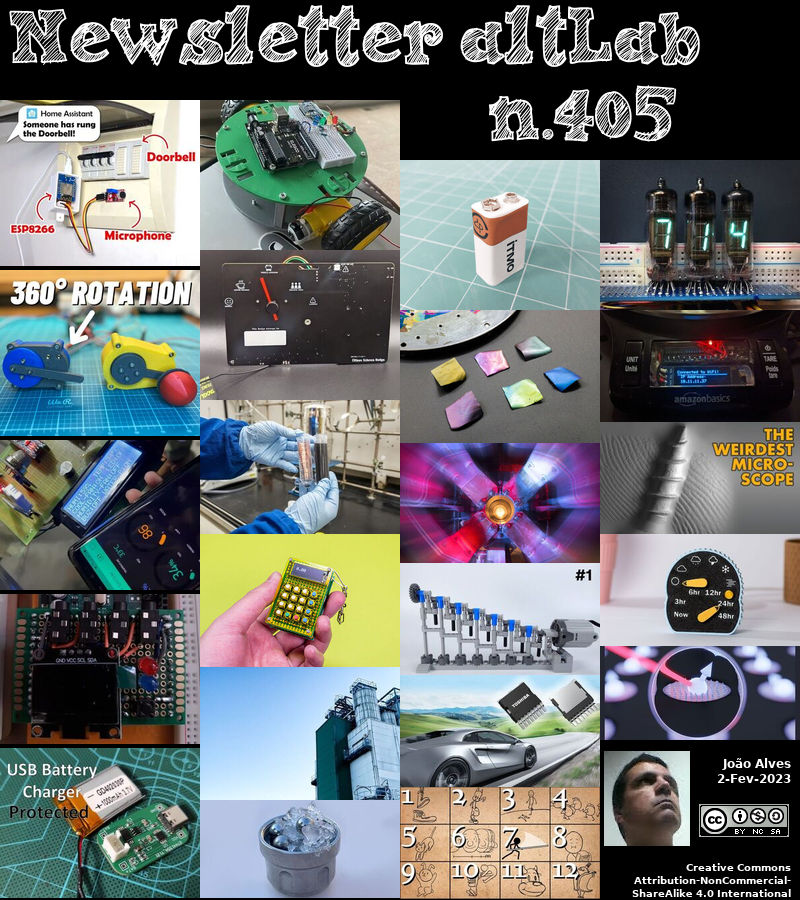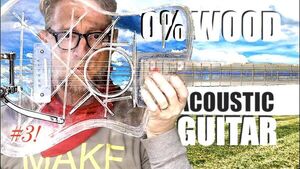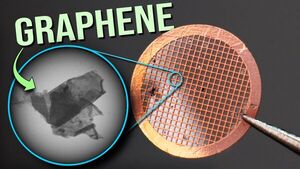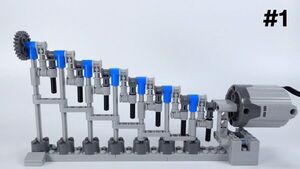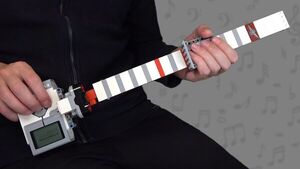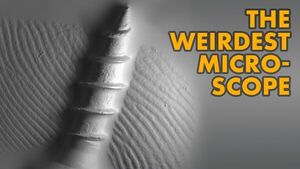2023-02-02 - Nº 405
Editorial
Esta é a Newsletter Nº 405 que se apresenta com o mesmo formato que as anteriores. Se gostar da Newsletter partilhe-a!
Todas as Newsletters encontram-se indexadas no link.
Esta Newsletter tem os seguintes tópicos:
Faz hoje anos que nascia, em 1522, o matemático italiano Lodovico Ferrari. Ele foi o primeiro a encontrar uma solução algébrica para a equação biquadrática, ou quartic (uma equação algébrica que contém o quarto poder da quantidade desconhecida mas sem poder superior).
Faz também hoje anos que nascia, em 1984, o físico holandês Hans Kramers. Ele trabalhou com Niels Bohr para compreender como as ondas electromagnéticas interagem com a matéria e fez importantes contribuições para a mecânica quântica e a física estatística. Em 1925, com Werner Heisenberg, desenvolveu a fórmula de dispersão de Kramers-Heisenberg. É também creditado[3] por ter introduzido em 1948 o conceito de renormalização na teoria quântica de campo, embora a sua abordagem fosse não-relativista. É também creditado pelas relações Kramers-Kronig com Ralph Kronig, que são equações matemáticas que relacionam partes reais e imaginárias de funções complexas limitadas pela causalidade. Uma outra refere-se a uma rotação de Kramers quando a taxa de passagem da barreira termicamente activada em função do amortecimento passa por um máximo, passando assim por uma transição entre os regimes de difusão de energia e de difusão espacial. É também conhecido pelo teorema de Kramers.
Em 1935, o detective Leonard Keeler realizou a primeira utilização da sua invenção, o polígrafo Keeler, ou máquina detector de mentiras, neste dia, em Portage, WI. Os examinados foram dois criminosos Cecil Loniello e Tony Grignano, que foram condenados por agressão no seu julgamento, onde os resultados foram introduzidos como prova.
Na Newsletter desta semana apresentamos diversas noticias, artigos científicos, projetos de maker e alguns vídeos interessantes.
 João Alves ([email protected])
João Alves ([email protected])
O conteúdo da Newsletter encontra-se sob a licença  Creative Commons Attribution-NonCommercial-ShareAlike 4.0 International License.
Creative Commons Attribution-NonCommercial-ShareAlike 4.0 International License.
Novidades da Semana
Outras Notícias

NASA’s Perseverance Rover Completes Mars Sample Depot
"Ten sample tubes, capturing an amazing variety of Martian geology, have been deposited on Mars’ surface so they could be studied on Earth in the future. Less than six weeks after it began, construction of the first sample depot on another world is complete. Confirmation that NASA’s Perseverance Mars rover successfully dropped the 10th and final tube planned for the depot was received around 5 p.m. PST (8 p.m. EST) Sunday, Jan. 29, by mission controllers at the agency’s Jet Propulsion Laboratory in Southern California. This major milestone involved precision planning and navigation to ensure the tubes could be safely recovered in the future by the NASA-ESA (European Space Agency) Mars Sample Return campaign, which aims to bring Mars samples to Earth for closer study. Throughout its science campaigns, the rover has been taking a pair of samples from rocks the mission team deems scientifically significant. One sample from each pair taken so far now sits in the carefully arranged depot in the “Three Forks” region of Jezero Crater." [...]
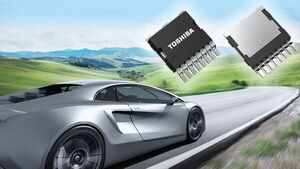
Toshiba Releases Automotive 40V N-channel Power MOSFETs with New High Heat Dissipation Package that Supports Larger Currents for Automotive Equipment
"Toshiba Electronic Devices & Storage Corporation ("Toshiba") has launched automotive 40V N-channel power MOSFETs, “XPQR3004PB” and “XPQ1R004PB,” that use the new L-TOGL™ (Large Transistor Outline Gull-wing Leads) package and feature a high drain current rating with low On-resistance. Shipments start today. In recent years, the transition to EVs has fueled demand for components adapted to the increased power consumption of automotive equipment. The new products use Toshiba’s new L-TOGL™ package, which supports large currents, low resistance, and high heat dissipation. The products do not have an internal post[1] structure, achieved by unifying the source connective part and outer leads with a copper clip. A multi-pin structure for the source leads decreases package resistance to about 30% that of the existing TO-220SM(W) package, pushing the drain current (DC) rating of XPQR3004PB to 400A—1.6 times higher than that of the current product[2]." [...]
Nordic Semiconductor announces availability of the nRF7002 companion IC and nRF7002 Development Kit, enabling developers to easily create innovative, low power Wi-Fi 6 IoT applications
"The nRF7002 complements Nordic’s cellular IoT and multiprotocol wireless solutions. By using the new IC, developers can leverage Wi-Fi 6’s higher throughput and ubiquitous domestic and industrial infrastructure when developing IoT applications. Design support through Nordic’s unified software development kit, nRF Connect SDK, and the nRF7002 DK make it easier and quicker to launch new products Nordic Semiconductor today announces the availability of the nRF7002™ Wi-Fi 6 companion IC and its associated nRF7002 Development Kit (DK). The IC is the first in Nordic’s Wi-Fi product family and is a low power Wi-Fi 6 companion IC providing seamless dual band (2.4 and 5 GHz) connectivity. The nRF7002 IC can be used together with Nordic’s award-winning nRF52® and nRF53® Series multiprotocol Systems-on-Chip (SoCs) and the nRF9160™ cellular IoT (LTE-M/NB-IoT) System-in-Package (SiP), but can equally be used in conjunction with non-Nordic host devices. The DK makes it easy for developers to get started on nRF7002-based IoT projects." [...]
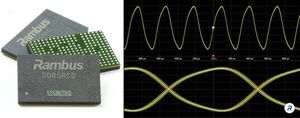
Rambus Delivers 6400 MT/s DDR5 Registering Clock Driver to Advance Server Memory Performance
"Rambus Inc. (NASDAQ: RMBS), a premier chip and silicon IP provider making data faster and safer, today announced the availability of its new 6400 MT/s DDR5 Registering Clock Driver (RCD) and sampling to the major DDR5 memory module (RDIMM) manufacturers. With a 33% increase in data rate and bandwidth over Gen1 4800 MT/s solutions, the Rambus Gen3 6400 MT/s DDR5 RCD enables a new level of main memory performance for data center servers. Delivering industry-leading latency and power, it offers optimized timing parameters for improved RDIMM margins. “Data center workloads have an insatiable thirst for greater memory bandwidth and capacity, and our mission is to advance the performance of server memory solutions that meet this need for each new server platform generation,” said Sean Fan, chief operating officer at Rambus. “We were first in the industry to 5600 MT/s, and now we have raised the bar with our Gen3 DDR5 RCD capable of 6400 MT/s to support a new generation of RDIMMs for server main memory.” “DDR5 offers tremendous performance enhancements for computing systems,” said Soo-Kyoum Kim, vice president, memory semiconductors at IDC. “As data center applications accelerate demand for more and more memory bandwidth, it is critical that the DDR5 ecosystem extends performance for the fundamental needs of next-generation data centers.” Rambus DDR5 memory interface chips including the RCD, Serial Presence Detect (SPD) Hub and Temperature Sensors are important in achieving a new level of performance for leading-edge servers." [...]
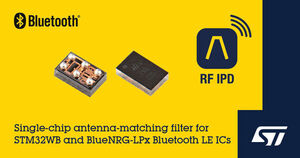
STMicroelectronics reveals single-chip antenna-matching ICs for easier, faster design with Bluetooth® LE SoCs and STM32 wireless microcontrollers
"STMicroelectronics has extended its range of single-chip antenna-matching ICs that simplify RF-circuit design with two new devices optimized for BlueNRG-LPS system-on-chip ICs (SoCs) and STM32WB1x and STM32WB5x* wireless microcontrollers. The MLPF-NRG-01D3 for BlueNRG-LPS and MLPF-WB-02D3 for STM32WB integrate the complete filtering and impedance-matching network needed for best RF output power and receiver sensitivity with an external antenna. Each has 50Ω nominal impedance on the antenna side. The chip-scale package has a minuscule footprint, 0.4mm bump pitch, and a profile of only 630µm after reflow soldering. Also featuring a 2.4GHz low-pass filter, ST’s new antenna-matching ICs ease compliance with worldwide radio regulations including FCC, ETSI, and ARIB specifications. The circuit elements are fabricated on a glass substrate leveraging ST’s integrated passive device (IPD) technology, which minimizes insertion losses and outperforms circuits built with discrete components." [...]
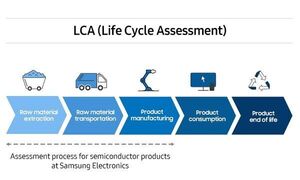
Samsung Electronics Achieves Life Cycle Assessment Verification on Product Carbon Footprint for Semiconductors
"Environmental impact of chips manufactured at Samsung's global sites to be shared to accelerate its B2B customers’ carbon neutrality goals Samsung Electronics a world leader in advanced semiconductor technology, today announced that it has established a Life Cycle Assessment (LCA) on the product carbon footprint of its semiconductor business and achieved verification from DNV, one of the world’s leading independent certification bodies. LCA is a methodology for assessing environmental impacts throughout the lifecycle of commercial products, processes, or services, by quantifying the amount of energy, materials and waste discharge. In detail, on its semiconductors’ carbon footprint, Samsung’s LCA covers raw material extraction to chip manufacturing, assembling and testing. Its results are in accordance with ISO 14040, ISO 14044 and ISO 14067 to ensure credibility and transparency. The carbon footprint is commonly used by Samsung and its customers to recognize the environmental impact across all phases of Samsung’s semiconductor products and can be used as a metric to track and reduce carbon emissions. “Since 2019, we have been actively mobilizing efforts to measure and reduce the carbon emissions of our key memory and logic solutions,” said Dooguen Song, Executive Vice President of the Environment, Health and Safety (EHS) Center at Samsung Electronics." [...]

STMicroelectronics simplifies high-efficiency two-port USB-PD adapters with ST-ONEMP digital controller
"STMicroelectronics is extending its highly integrated and power-saving ST-ONE family of USB Power Delivery (USB-PD) digital controllers by introducing the ST-ONEMP, which supports two power outputs. The ST-ONEMP builds on the market-first ST-ONE architecture combining an Arm® Cortex®-M0+ microcontroller, energy-efficient non-complementary active clamp flyback controller, and USB-PD 3.1 interface in a single package. Using galvanic isolation between primary-side and secondary-side circuitry, the ST-ONE architecture greatly simplifies the design and assembly of USB-PD power adapters. Now, by adding support for power sharing, the latest ST-ONEMP simplifies implementing a second output in addition to the USB-PD output to enhance flexibility and convenience for end users. Inside the ST-ONEMP, the Cortex-M0+ MCU is embedded on the secondary side and has 64KB of Flash for customizing the USB-PD protocol and power conversion firmware. USB-PD 3.1 PPS certified firmware is pre-loaded, permitting a turnkey solution for standard applications." [...]

Microsoft, university researchers use AI to aid in study of ancient script on China’s “oracle bones”
"Since farmers began digging up ancient bone fragments in the fields around the Yellow River in eastern China over 100 years ago, researchers have been poring over the mysterious script found on them. The script on the “oracle bones,” so called because they were used to try to divine the future, is the earliest known form of Chinese writing, dating back 3,000 years. But their study has been challenging: the bones are fragile and fragmented, copies of the script made by ink rubbings can be blurry or incomplete and collections are scattered in national museums and private collections in China and around the world. Now researchers in Beijing are using AI to fast-track the basic but necessary work of comparing each script sample with thousands of others in databases. This work paves the way for researchers to decipher them and shed light on everything from the daily concerns of people in ancient times to how Chinese writing first developed. “This is a great example of human-machine collaboration,” said Bofeng Mo, a professor from the Center for Oracle Bone Studies at Capital Normal University, who worked on the project with Zhirong Wu, a senior researcher at Microsoft Research Asia." [...]

STMicroelectronics unveils world’s first MCU Edge-AI Developer Cloud
"STMicroelectronics (NYSE: STM), a global semiconductor leader serving customers across the spectrum of electronics applications, is continuing to expand its solutions for embedded AI developers and data scientists with a new, industry-first set of tools and services to get edge AI technology on the market faster and with less complexity by aiding hardware and software decision-making. The STM32Cube.AI Developer Cloud opens access to an extensive suite of online development tools built around the industry-leading STM32 family of microcontrollers (MCUs). “Our goal is to deliver the best hardware, software, and services to meet the challenges faced by embedded developers and data scientists so that they can develop their edge AI application faster and with less hassle,” said Ricardo De Sa Earp, Executive Vice President General-Purpose Microcontroller Sub-Group, STMicroelectronics. “Today we are unveiling the world’s first MCU AI Developer Cloud, which works hand-in-glove with our STM32Cube.AI ecosystem. This new tool brings the possibility to remotely benchmark models on STM32 hardware through the cloud to save on workload and cost. Serving the growing demand for edge AI-based systems, the STM32Cube.AI desktop front-end includes the resources for developers to validate and generate optimized STM32 AI libraries from trained Neural Networks." [...]

Home automation blossoms with Arduino’s Plant Watering Kit
"Love your plants, but also have a life? If you work long hours, travel often or just can’t be tied down to a regular schedule, the Arduino Plant Watering Kit is for you. It’s a complete kit with all the components you need to set up an automated mini irrigation system that will unfailingly water your favorite pothus, spider plant or monstera on a regular schedule. There’s more: the humidity sensor in the kit connects to the Cloud so you can monitor soil moisture on-the-go from your computer or phone, via a custom dashboard. This means you can trigger manual watering on a particularly hot day or skip a routine activation if not needed. Over time, you might even gain useful insight about your plants’ water requirements and fine-tune the best schedule for each one, from cacti to ferns." [...]

SpaceX launches heaviest payload on Falcon 9 rocket
"A Falcon 9 rocket thundered off a launch pad at Cape Canaveral before dawn Thursday with 56 Starlink internet satellites, setting a record for the heaviest cargo ever flown on a SpaceX rocket at more than 38,000 pounds. The mission was the fifth launch by SpaceX so far this year, and the 69th launch with a primary purpose of placing Starlink internet satellites into orbit. With the 56 fresh spacecraft launched Thursday, SpaceX has deployed 3,773 Starlink satellites, with plans to add thousands more in the coming years. Liftoff of the 229-foot-tall (70-meter) Falcon 9 rocket from pad 40 at Cape Canaveral Space Force Station occurred at 4:32:20 a.m. EST (0932:20 GMT) Thursday. Light rain showers moved through the spaceport in the hour before liftoff, but conditions cleared sufficiently to permit the Falcon 9 to get off the ground on time. The 56 Starlink internet satellites mounted on top of the Falcon 9 rocket headed into an orbital plane that is part of SpaceX’s second-generation Starlink net network, called Gen2." [...]
Ciência e Tecnologia
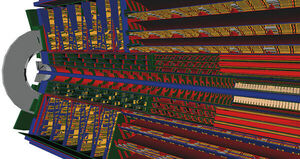
A new ATLAS for the high-luminosity era
"Stefan Guindon, Christian Ohm and Caterina Vernieri describe the major ‘Phase II’ upgrades taking place to prepare the ATLAS detector for the High-Luminosity LHC. The discovery of the Higgs boson at the LHC in 2012 changed the landscape of high-energy physics forever. After just a few short years of data-taking by the ATLAS and CMS experiments, this last piece of the Standard Model (SM) was proven to exist. Since then, the Higgs sector has been studied using a rapidly growing dataset and, so far, all measurements agree with the SM predictions within the experimental uncertainties. In parallel, a comprehensive programme of searches for beyond-SM processes has been carried out, resulting in strong constraints on new physics. A harvest of precise measurements of a large variety of processes, confronted with state-of-the-art theoretical predictions, has further supported the SM." [...]

An illuminated water droplet creates an ‘optical atom’
"Shining light on a water droplet creates effects analogous to what happens in an atom. This can help us understand how atoms work, write researchers from the University of Gothenburg in a new journal article. If you whisper by the wall in the dome of St Paul's Cathedral in London, you'll discover that the sound bounces off the dome’s walls all the way around and is audible on the opposite side. Which is why the Cathedral’s dome has been dubbed ‘the whispering gallery'. The same effect is achieved when a beam of light is shone into a water droplet. Rays of light bounce off the inner wall of the water droplet over and over again, going around and around inside the droplet." [...]
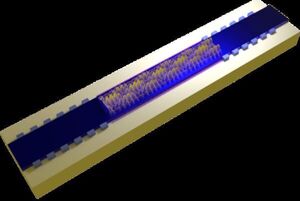
Researchers create first supermode optical resonator
"What does it take for scientists to push beyond the current limits of knowledge? Researchers in Federico Capasso’s group at the Harvard John A. Paulson School of Engineering and Applied Sciences (SEAS) have developed an effective formula. “Dream big, question everything we know, question the textbooks,” says Vincent Ginis, a visiting professor at SEAS and first author on a new paper in Nature Communications reporting a breakthrough in optical resonator technology. “That’s how Federico asks our lab team to work together. He challenges us to rethink all the classical rules to see if we can make devices do things better and in novel ways.” That approach led to the team’s latest result, an optical resonator capable of manipulating light in never-before-observed ways. The breakthrough could influence how resonators are understood and open doors for new capabilities." [...]

Rinse and Repeat: An Easy New Way to Recycle Batteries is Here
"Berkeley Lab scientists invented a material that will make it simple and economical to recycle a wide range of batteries Lithium-ion batteries have revolutionized electronics and enabled an accelerating shift toward clean energy. These batteries have become an integral part of 21st century life, but we’re at risk of running out before 2050. The main elements used in each battery – lithium, nickel, and cobalt metals as well as graphite – are increasingly scarce and expensive, and there is little environmental or fair-labor oversight of some of the remaining international supply chains. There is a pressing need to start reusing the materials we’ve already dug up and to make the battery production process safer and more equitable for all. A team of scientists from Lawrence Berkeley National Laboratory (Berkeley Lab) has invented an award-winning new battery material that can check both boxes. Their product, called the Quick-Release Binder, makes it simple and affordable to separate the valuable materials in Li-ion batteries from the other components and recover them for reuse in a new battery." [...]
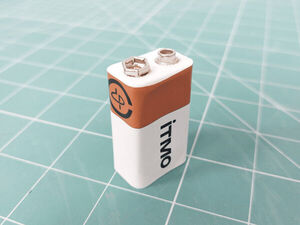
ITMO Students Make a Battery That Can Be Wirelessly Recharged up to 500 Times
"In spite of their many disadvantages, batteries remain one of the key components in contemporary electronics. While changing their structure entirely is impossible due to the chemical and physical processes happening inside, scientists, startups, and major companies are searching for ways to reinvent them or adopt totally new approaches. One such approach was suggested by students of ITMO’s School of Physics and Engineering – their nine-volt battery can be recharged wirelessly with a regular smartphone charger. ITMO.NEWS breaks down the science behind the new device. The afterlife of a battery Because of their various toxic components (lithium, zinc, nickel, cobalt, etc.) single-use batteries have to be properly recycled – usually they are collected at special recycling points." [...]

A machine that learns to learn
"A neural network that can learn its own learning algorithm opens the door to self-improving artificial intelligence. By replacing parts of the conventional nodes in a neural network (NN) with tiny NNs, a research team from KAUST and the Swiss Artificial Intelligence Lab IDSIA have devised a general self-improving artificial intelligence (AI) model. The proof-of-concept study could enable a new generation of AI that can “learn to learn” without human programming. Today’s most popular AI models are artificial neural networks (NN) — interconnected networks of programmable nodes having weighted connections that are incrementally adjusted in response to labelled training data. The program that is used to change the weights is called a learning algorithm (LA), which is preconfigured by the human developer. The most popular LA is backpropagation, by which the NN “learns” by adjusting the weights to give the correct answers to a training input." [...]

Physicists observe rare resonance in molecules for the first time
"The findings could provide a new way to control chemical reactions. If she hits just the right pitch, a singer can shatter a wine glass. The reason is resonance. While the glass may vibrate slightly in response to most acoustic tones, a pitch that resonates with the material’s own natural frequency can send its vibrations into overdrive, causing the glass to shatter. Resonance also occurs at the much smaller scale of atoms and molecules. When particles chemically react, it’s partly due to specific conditions that resonate with particles in a way that drives them to chemically link." [...]

Passive radiative cooling can be controlled electrically
"Energy-efficient ways of cooling buildings and vehicles will be required in a changing climate. Researchers at Linköping University have now shown that electrical tuning of passive radiative cooling can be used to control temperatures of a material at ambient temperatures and air pressure. The results have been published in Cell Reports Physical Science. "To cool buildings, for example, traditional air conditioning is mainly used today, which requires large amounts of energy and uses environmentally hazardous refrigerants. With the help of passive radiative cooling, the cold of outer space could be used to complement normal ACs and reduce energy consumption," says Magnus Jonsson, professor and leader of the Organic Photonics and Nano-Optics group at Linköping University. Passive radiative cooling utilizes that thermal energy can leave an object in the form of infrared radiation." [...]

Engineers invent vertical, full-color microscopic LEDs
"Stacking light-emitting diodes instead of placing them side by side could enable fully immersive virtual reality displays and higher-resolution digital screens. Take apart your laptop screen, and at its heart you’ll find a plate patterned with pixels of red, green, and blue LEDs, arranged end to end like a meticulous Lite Brite display. When electrically powered, the LEDs together can produce every shade in the rainbow to generate full-color displays. Over the years, the size of individual pixels has shrunk, enabling many more of them to be packed into devices to produce sharper, higher-resolution digital displays. But much like computer transistors, LEDs are reaching a limit to how small they can be while also performing effectively. This limit is especially noticeable in close-range displays such as augmented and virtual reality devices, where limited pixel density results in a “screen door effect” such that users perceive stripes in the space between pixels." [...]
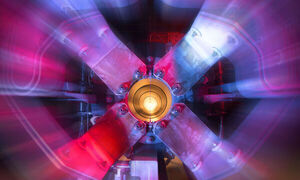
‘Ghostly’ neutrinos provide new path to study protons
"Scientists have discovered a new way to investigate the structure of protons using neutrinos, known as ‘ghost particles.’ Neutrinos are one of the most abundant particles in our universe, but they are notoriously difficult to detect and study: they don’t have an electrical charge and have nearly no mass. They are often referred to as “ghost particles” because they rarely interact with atoms. But because they are so abundant, they play a large role in helping scientists answer fundamental questions about the universe. In groundbreaking research described in Nature—led by researchers from the University of Rochester—scientists from the international collaboration MINERvA have, for the first time, used a beam of neutrinos at the Fermi National Accelerator Laboratory, or Fermilab, to investigate the structure of protons. MINERvA is an experiment to study neutrinos, and the researchers did not set out to study protons. But their feat, once thought impossible, offers scientists a new way of looking at the small components of an atom’s nucleus." [...]

World Wide Web Consortium is now a public-interest nonprofit organization
"Growing from a strong foundation built at MIT CSAIL and other academic hosts, W3C will continue its mission of developing standards for an open and equitable web. The World Wide Web Consortium (W3C), which leads development of the technical standards and guidelines to ensure that the web remains open, accessible, and interoperable, officially launched as a public-interest nonprofit organization as of Jan. 1. After 28 years of being hosted collectively at MIT and three other international host organizations, the crusaders for web standards have become their own entity. Many diverse brains make up and contribute to the community collective that is W3C, cultivating and setting global standards for building websites, browsers, and devices. Some of W3C's greatest hits involve making public standards for the technologies that underlie the web, such as HTML, CSS, and XML, which are so ubiquitous, they’re practically ingrained in the fabric of our daily lives — every time we use a computer or smartphone. The organization has created more than 460 web standards since 1994, gathering minds from software and hardware worlds, research centers, universities, and public administrators." [...]

Astronomers observe light bending around an isolated white dwarf
"Astronomers have directly measured the mass of a dead star using an effect known as gravitational microlensing, first predicted by Einstein in his General Theory of Relativity, and first observed by two Cambridge astronomers 100 years ago. The international team, led by the University of Cambridge, used data from two telescopes to measure how light from a distant star bent around a white dwarf known as LAWD 37, causing the distant star to temporarily change its apparent position in the sky. This is the first time this effect has been detected for a single, isolated star other than our Sun, and the first time the mass of such a star has been directly measured. The results are reported in the Monthly Notices of the Royal Astronomical Society. LAWD 37 is a white dwarf, the result of the death of a star like our own. When a star dies, it stops burning its fuel and expels its outer material, leaving only a hot, dense core." [...]

To decarbonize the chemical industry, electrify it
"Researchers urge industry and the research community to explore electrification pathways to reduce chemical industry emissions. The chemical industry is the world’s largest industrial energy consumer and the third-largest source of industrial emissions, according to the International Energy Agency. In 2019, the industrial sector as a whole was responsible for 24 percent of global greenhouse gas emissions. And yet, as the world races to find pathways to decarbonization, the chemical industry has been largely untouched. “When it comes to climate action and dealing with the emissions that come from the chemical sector, the slow pace of progress is partly technical and partly driven by the hesitation on behalf of policymakers to overly impact the economic competitiveness of the sector,” says Dharik Mallapragada, a principal research scientist at the MIT Energy Initiative. With so many of the items we interact with in our daily lives — from soap to baking soda to fertilizer — deriving from products of the chemical industry, the sector has become a major source of economic activity and employment for many nations, including the United States and China." [...]

Researchers devise a new path toward ‘quantum light’
"Researchers have theorised a new mechanism to generate high-energy ‘quantum light’, which could be used to investigate new properties of matter at the atomic scale. The researchers, from the University of Cambridge, along with colleagues from the US, Israel and Austria, developed a theory describing a new state of light, which has controllable quantum properties over a broad range of frequencies, up as high as X-ray frequencies. Their results are reported in the journal Nature Physics. The world we observe around us can be described according to the laws of classical physics, but once we observe things at an atomic scale, the strange world of quantum physics takes over. Imagine a basketball: observing it with the naked eye, the basketball behaves according to the laws of classical physics. But the atoms that make up the basketball behave according to quantum physics instead." [...]
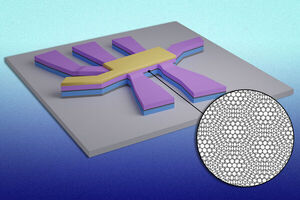
Study: Superconductivity switches on and off in “magic-angle” graphene
"A quick electric pulse completely flips the material’s electronic properties, opening a route to ultrafast, brain-inspired, superconducting electronics. With some careful twisting and stacking, MIT physicists have revealed a new and exotic property in “magic-angle” graphene: superconductivity that can be turned on and off with an electric pulse, much like a light switch. The discovery could lead to ultrafast, energy-efficient superconducting transistors for neuromorphic devices — electronics designed to operate in a way similar to the rapid on/off firing of neurons in the human brain. Magic-angle graphene refers to a very particular stacking of graphene — an atom-thin material made from carbon atoms that are linked in a hexagonal pattern resembling chicken wire. When one sheet of graphene is stacked atop a second sheet at a precise “magic” angle, the twisted structure creates a slightly offset “moiré” pattern, or superlattice, that is able to support a host of surprising electronic behaviors. In 2018, Pablo Jarillo-Herrero and his group at MIT were the first to demonstrate magic-angle twisted bilayer graphene." [...]

New form of ice is like a snapshot of liquid water
"A collaboration between scientists at Cambridge and UCL has led to the discovery of a new form of ice that more closely resembles liquid water than any other and may hold the key to understanding this most famous of liquids. The new form of ice is amorphous. Unlike ordinary crystalline ice where the molecules arrange themselves in a regular pattern, in amorphous ice the molecules are in a disorganised form that resembles a liquid. In their paper, published in Science, the team created a new form of amorphous ice in experiment and achieved an atomic-scale model of it in computer simulation. The experiments used a technique called ball-milling, which grinds crystalline ice into small particles using metal balls in a steel jar. Ball-milling is regularly used to make amorphous materials, but it had never been applied to ice." [...]

Researchers use lead recycled from car batteries to make photodetectors
"Recycling strategy could keep lead out of landfills and give used car batteries a second life in high-tech equipment As lithium-ion batteries continue to decrease in price, they are quickly replacing the lead-acid batteries traditionally used in cars and other vehicles. This is creating a sudden abundance of used lead acid batteries, which would be harmful to the environment and people if not recycled properly. To help deal with this problem, researchers developed an environmentally friendly method to turn lead from used lead acid batteries into photodetectors operating in the UV-visible band. “We believe this recycling strategy could significantly reduce the lead pollution resulting from waste lead acid batteries, which is important to the environment,” said research team leader Longxing Su from Southern University of Science and Technology in China. “The photodetectors promote the recycling economy by creating a market for recycled lead. They can be used for a variety of applications including optical communication, chemical analysis and imaging.” In the Optica Publishing Group journal Optics Letters, Su and colleagues describe their process for extracting lead from discarded lead acid batteries and then using it to synthesize lead(II)iodide (PbI2) microcrystals suitable for use in photodetectors." [...]

Legged robots need more testing before real-world use
"When it comes to the evolution of mobile robots, it may be a long time before legged robots are able to safely interact in the real world, according to a new study. Led by a team of researchers at The Ohio State University, the study published recently in the IEEE/RSJ International Conference on Intelligent Robots and Systems (IROS) 2022 describes a framework for testing and characterizing the safety of legged robots, machines that, unlike their wheeled counterparts, rely on mechanical limbs for movement. The study found that many current legged robotic models don't always act predictably in response to real-life situations, meaning it's hard to predict whether they'll fail -- or succeed -- at any given task that requires movement. "Our work reveals that these robotic systems are complex and, more importantly, anti-intuitive," said Bowen Weng, a PhD student in electrical and computer engineering at Ohio State. "It means you can't rely on the robot's ability to know how to react in certain situations, so the completeness of the testing becomes even more important." As mobile robots evolve to carry out more diverse and sophisticated tasks, many in the scientific community also note that the industry needs a set of universal safety testing regulations, especially as robots and other artificial intelligence have gradually begun to flow into our everyday lives." [...]

Scientists release newly accurate map of all the matter in the universe
"Sometimes to know what the matter is, you have to find it first. When the universe began, matter was flung outward and gradually formed the planets, stars and galaxies that we know and love today. By carefully assembling a map of that matter today, scientists can try to understand the forces that shaped the evolution of the universe. A group of scientists, including several with the University of Chicago and Fermi National Accelerator Laboratory, have released one of the most precise measurements ever made of how matter is distributed across the universe today. Combining data from two major telescope surveys of the universe, the Dark Energy Survey and the South Pole Telescope, the analysis involved more than 150 researchers and is published as a set of three articles Jan. 31 in Physical Review D. Among other findings, the analysis indicates that matter is not as "clumpy" as we would expect based on our current best model of the universe, which adds to a body of evidence that there may be something missing from our existing standard model of the universe. Cooling and clumps After the Big Bang created all the matter in the universe in a very hot, intense few moments about 13 billion years ago, this matter has been spreading outward, cooling and clumping as it goes." [...]
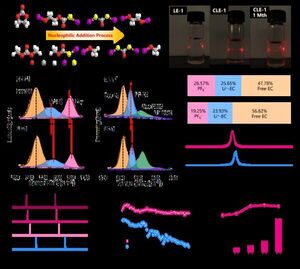
The research team of BIT has made progress in the design of electrolyte for lithium battery ultra-fast charging and low-temperature battery
"In order to meet the higher demand for energy storage equipment of electric vehicles and special equipment, it is extremely important to design lithium-ion batteries with high energy density and long cycle life. Ultra-fast charging (XFC) and low-temperature performance are extremely important for the design of high-performance lithium-ion batteries. Designing new electrolytes, improving the Li+transport in the cathode/electrolyte interface reaction layer (CEI), and improving the structural stability of the secondary particles of the oxide polycrystalline cathode material are effective ways to solve the ultra-fast charging and rapid capacity decay of lithium-ion batteries at low temperatures. Based on this, the research team of Yang Wen, the associate professor of the School of Chemistry and Chemical Engineering of BIT, published a research paper entitled "Colloid Electrolyte with Changed Li+Solvation Structure for High-Power, Low-Temperature Lithium-Ion Batteries" in the internationally renowned journal Advanced Materials. Yang Wen's research team added lithium thiocarbonate (LTC) as an additive to the commercial electrolyte (LE) to form a colloidal electrolyte (CLE) with the Tyndall phenomenon. In colloidal electrolyte, LTC can have strong interaction with PF6 anion and organic solvent; On the one hand, LTC weakens the electrostatic attraction between the anion and cation of LiPF6 electrolyte and realizes high ionic conductivity of the electrolyte at room temperature and low temperature (σLi+ 15 to 4.5 mS cm-1 at 30 and -20 ºC); On the other hand, the strong interaction between LTC and solvent leads to the desolvation process of lithium ion before it is embedded into the cathode material, so as to improve the lithium-ion transport at the cathode interface." [...]
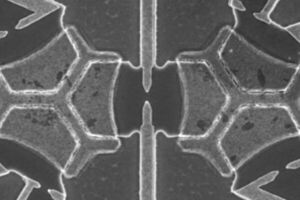
Analogue solution offers answers to some of quantum physics’ biggest questions
"A new type of analogue computer developed by researchers at UCD and Stanford University could solve some of the most exciting unanswered questions in quantum physics. In new research published in Nature Physics, the collaborating scientists detailed how this ‘quantum simulator’ can simulate interactions between two quantum objects, and can easily be scaled for more complicated systems - offering the opportunity to delve into the tantalising topics of superconductors and other unusual states of matter. “Certain problems are simply too complex for even the fastest digital classical computers to solve,” said Dr Andrew Mitchell, Director of the UCD Centre for Quantum Engineering, Science, and Technology (C-QuEST) and co-author of the paper. “The accurate simulation of complex quantum materials such as the high-temperature superconductors is a really important example – that kind of computation is far beyond current capabilities because of the exponential computing time and memory requirements needed to simulate the properties of realistic models. “While we have not yet been able to build an all-purpose programmable quantum computer with sufficient power to solve all of the open problems in physics, what we can now do [with quantum simulators] is build bespoke analogue devices with quantum components that can solve specific quantum physics problems.” The essential idea behind these specialised analogue devices is to build a hardware solution to the problem rather than writing code for a digital computer. The new ‘quantum simulator’ architecture involves electronic circuits with nanoscale components whose properties are governed by the laws of quantum mechanics." [...]

A neuro-chip to manage brain disorders
"EPFL researchers have combined low-power chip design, machine learning algorithms, and soft implantable electrodes to produce a neural interface that can identify and suppress symptoms of various neurological disorders. Mahsa Shoaran of the Integrated Neurotechnologies Laboratory in the School of Engineering collaborated with Stéphanie Lacour in the Laboratory for Soft Bioelectronic Interfaces to develop NeuralTree: a closed-loop neuromodulation system-on-chip that can detect and alleviate disease symptoms. Thanks to a 256-channel high-resolution sensing array and an energy-efficient machine learning processor, the system can extract and classify a broad set of biomarkers from real patient data and animal models of disease in-vivo, leading to a high degree of accuracy in symptom prediction. “NeuralTree benefits from the accuracy of a neural network and the hardware efficiency of a decision tree algorithm,” Shoaran says. “It’s the first time we’ve been able to integrate such a complex, yet energy-efficient neural interface for binary classification tasks, such as seizure or tremor detection, as well as multi-class tasks such as finger movement classification for neuroprosthetic applications.” Their results were presented at the 2022 IEEE International Solid-State Circuits Conference and published in the IEEE Journal of Solid-State Circuits, the flagship journal of the integrated circuits community. Efficiency, scalability, and versatility NeuralTree functions by extracting neural biomarkers – patterns of electrical signals known to be associated with certain neurological disorders – from brain waves." [...]

New Carbon Nanotube Yarn Harvests Mechanical Energy
"Nanotechnology researchers at The University of Texas at Dallas have made novel carbon nanotube yarns that convert mechanical movement into electricity more effectively than other material-based energy harvesters. In a study published Jan. 26 in Nature Energy, UT Dallas researchers and their collaborators describe improvements to high-tech yarns they invented called "twistrons," which generate electricity when stretched or twisted. Their new version is constructed much like traditional wool or cotton yarns. Twistrons sewn into textiles can sense and harvest human motion; when deployed in salt water, twistrons can harvest energy from the movement of ocean waves; and twistrons can even charge supercapacitors. First described by UTD researchers in a study published in 2017 in the journal Science, twistrons are constructed from carbon nanotubes (CNTs), which are hollow cylinders of carbon 10,000 times smaller in diameter than a human hair. To make twistrons, the nanotubes are twist-spun into high-strength, lightweight fibers, or yarns, into which electrolytes can also be incorporated." [...]
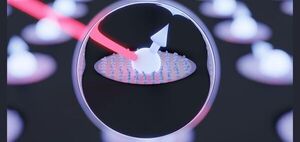
Researchers find ways to improve the storage time of quantum information in a spin rich material
"An international team of scientists have demonstrated a leap in preserving the quantum coherence of quantum dot spin qubits as part of the global push for practical quantum networks and quantum computers. These technologies will be transformative to a broad range of industries and research efforts: from the security of information transfer, through the search for materials and chemicals with novel properties, to measurements of fundamental physical phenomena requiring precise time synchronisation among the sensors. Spin-photon interfaces are elementary building blocks for quantum networks that allow converting stationary quantum information (such as the quantum state of an ion or a solid-state spin qubit) into light, namely photons, that can be distributed over large distances. A major challenge is to find an interface that is both good at storing quantum information and efficient at converting it into light. Optically active semiconductor quantum dots are the most efficient spin-photon interface known to date but extending their storage time beyond a few microseconds has puzzled physicists in spite of decade-long research efforts. Now, researchers at the University of Cambridge, the University of Linz and the University of Sheffield have shown that there is a simple material's solution to this problem that improves the storage of quantum information beyond hundred microseconds." [...]
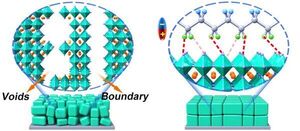
Stability of perovskite solar cells reaches next milestone
"The material class of halide perovskites is seen as a great hope for even more solar power at even lower costs. The materials are very cheap, can be processed into thin films with minimal energy input and achieve already efficiencies that are significantly higher than those of conventional silicon solar cells. The Goal: 20 Years Outdoor Stability However, solar modules are expected to provide stable output for at least 20 years in outdoor conditions while exposed to large temperature fluctuations. Silicon PV manages this easily, whereas the semi-organic perovskites lose performance rather fast. "Sunlight can heat up the inside of a PV cell to 80 Celsius; in the dark, the cell then cools down immediately to the outside temperature. This triggers large mechanical stresses in the thin layer of perovskite microcrystals, creating defects and even local phase transitions, so that the thin film loses its quality," explains Prof. Antonio Abate, who heads a large group at HZB." [...]
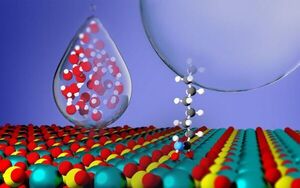
Designer molecules may help valuable minerals float
"Critical Materials Institute researchers at Oak Ridge National Laboratory and Arizona State University studied the mineral monazite, an important source of rare-earth elements, to enhance methods of recovering critical materials for energy, defense and manufacturing applications. Rare-earth elements occur together naturally in mineral ores such as monazite but are economically challenging to recover. New approaches to separate the valuable ore from unwanted materials are needed. The research team combined theory and experiment to gain atom-level insights on monazite, providing a first look at surface features important to the design of flotation collector molecules – materials that work like life jackets to buoy up monazite particles on air bubbles from mixed mineral slurries. “Our efforts address materials needed for froth flotation techniques used to separate high-grade ore from low-value materials during processing. Fundamental research can help us tailor future collectors to make monazite recovery more efficient and cost-effective,” said ORNL’s Vyacheslav Bryantsev." [...]

Researchers take a step toward novel quantum simulators
"Some of the most exciting topics in modern physics, such as high-temperature superconductors and some proposals for quantum computers, come down to the exotic things that happen when these systems hover between two quantum states. Unfortunately, understanding what's happening at those points, known as quantum critical points, has proved challenging. The math is frequently too hard to solve, and today's computers are not always up to the task of simulating what happens, especially in systems with any appreciable number of atoms involved. Now, researchers at Stanford University and the Department of Energy's SLAC National Accelerator Laboratory and their colleagues have taken a step toward building an alternative approach, known as a quantum simulator. Although the new device, for now, only simulates the interactions between two quantum objects, the researchers argue in a paper published January 30 in Nature Physics that it could be scaled up relatively easily. If so, researchers could use it to simulate more complicated systems and begin answering some of the most tantalizing questions in physics." [...]

Thin, Lightweight Layer Provides Radiation Barrier for Perovskites in Space, Protection From Elements on Earth
"An ultrathin protective coating proves sufficient to protect a perovskite solar cell from the harmful effects of space and harden it against environmental factors on Earth, according to newly published research from the U.S. Department of Energy's National Renewable Energy Laboratory (NREL). Funded by the U.S. Department of Defense's Operational Energy Capability Improvement Fund (OECIF), the NREL research was done for the Air Force Research Laboratory (AFRL) to develop low-cost innovative energy sources for powering the armed forces worldwide. The research is the latest effort to determine the effectiveness of perovskites for use in space applications, where it would be exposed to protons, alpha particles, atomic oxygen, and other stressors. The ability to use perovskites to generate power in space is enticing because they offer a lower-cost and lightweight option to other technologies with the potential for achieving efficiencies similar to those of current space PV technologies. Just as on Earth, perovskite solar cells need to have suitable durability. However, the environment in space is significantly different." [...]

Researchers complete first real-world study of Martian helicopter dust dynamics
"Mars is a dusty planet. From tiny dust devils to vast storms that shroud the planet, dust is a constant challenge for research missions. That was especially true for Ingenuity, the rotorcraft that since February 2021 has been exploring Mars alongside NASA's Perseverance rover. Now, researchers at Stevens Institute of Technology, the Space Science Institute, and the Jet Propulsion Laboratory have completed the first real-world study of Martian dust dynamics based on Ingenuity's historic first flights on the Red Planet, paving the way for future extraterrestrial rotorcraft missions. The work, reported in the December 2022 issue of Journal of Geophysical Research: Planets, could support NASA's Mars Sample Return Program, which will retrieve samples collected by Perseverance, or the Dragonfly mission that will set course for Titan, Saturn's largest moon, in 2027. "There's a reason that helicopter pilots on Earth prefer to land on helipads," said Jason Rabinovitch, a co-author and assistant professor at Stevens." [...]

Seawater split to produce green hydrogen
"Researchers have successfully split seawater without pre-treatment to produce green hydrogen. The international team was led by the University of Adelaide’s Professor Shizhang Qiao and Associate Professor Yao Zheng from the School of Chemical Engineering. “We have split natural seawater into oxygen and hydrogen with nearly 100 per cent efficiency, to produce green hydrogen by electrolysis, using a non-precious and cheap catalyst in a commercial electrolyser,” said Professor Qiao. A typical non-precious catalyst is cobalt oxide with chromium oxide on its surface. “We used seawater as a feedstock without the need for any pre-treatment processes like reverse osmosis desolation, purification, or alkalisation,” said Associate Professor Zheng. “The performance of a commercial electrolyser with our catalysts running in seawater is close to the performance of platinum/iridium catalysts running in a feedstock of highly purified deionised water." [...]

Stanford scientists illuminate barrier to next-generation battery that charges very quickly
"In the race for fast-charging, energy-dense lithium metal batteries, researchers discovered why the promising solid electrolyte version has not performed as hoped. This could help new designs – and eventually battery production – avoid the problem. New lithium metal batteries with solid electrolytes are lightweight, inflammable, pack a lot of energy, and can be recharged very quickly, but they have been slow to develop due to mysterious short circuiting and failure. Now, researchers at Stanford University and SLAC National Accelerator Laboratory say they have solved the mystery. It comes down to stress – mechanical stress to be more precise – especially during potent recharging. “Just modest indentation, bending or twisting of the batteries can cause nanoscopic fissures in the materials to open and lithium to intrude into the solid electrolyte causing it to short circuit,” explained senior author William Chueh, an associate professor of materials science and engineering in the School of Engineering, and of energy sciences and engineering in the new Stanford Doerr School of Sustainability." [...]
Projetos Maker
Diversos Projetos interessantes.
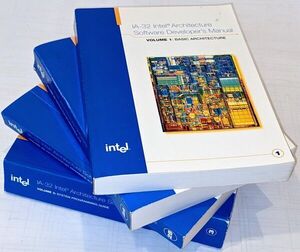
Understanding the x86's Decimal Adjust after Addition (DAA) instruction
"I've been looking at the DAA machine instruction on x86 processors, a special instruction for binary-coded decimal arithmetic. Intel's manuals document each instruction in detail, but the DAA description doesn't make much sense. I ran an extensive assembly-language test of DAA on a real machine to determine exactly how the instruction behaves. In this blog post, I explain how the instruction works, in case anyone wants a better understanding. The DAA instruction The DAA (Decimal Adjust AL1 after Addition) instruction is designed for use with packed BCD (Binary-Coded Decimal) numbers. The idea behind BCD is to store decimal numbers in groups of four bits, with each group encoding a digit 0-9 in binary." [...]
ISS Tracker Using a Raspberry Pico
"This Pico-based International Space Station (ISS) Tracker project will cost around 25 ($30) - most of which is the cost of the display I used. It can be adapted to use any Pico-compatible display you may have, or even to send the tracking information to another PC or Raspberry Pi. In its current form, it will: - Show the latitude and longitude of the sub-satellite point (the point on the earth directly below the ISS) - Show the distance to a designated base station. - Show the ISS position on a world map. - Indicates when the satellite gets within 5000 km of the base station using the display's on-board RGB LED using different colours as it gets closer. Supplies - Raspberry Pi Pico W (the WiFi version) with GPIO pins fitted - A display compatible with the Pico." [...]

ACCM Shields v1 & v2 for Arduino UNO
"AC Digital Clamp and Meter This project reflects the second stage of work with the Prototype of Current Clamp with accounting and triggering capabilities. ACCM Concepts Sinusoidal currents inside electric cables produce a variable and also sinusoidal electromagnetic field. Thanks to the electrical induction physical property, the sct013 sensor (a copper coil and a resistor in parallel) produces a voltage as output which is related to the fluctuations of the electromagnetic fields around the wire going through the sct013 clamp. Then, based on user frequency settings, the software will try to catch analog sample of data of exactly a period. It will then calculate min and max values over the period and the effective value of the sct013 output and then convert it into a current value (conversion ratio depends of sct013 model). Final work consist in energy accounting (kWh) and triggering amount of energy used (Wh) or money spent (€) in order to produce an action : the prototype produces a blue led flash." [...]
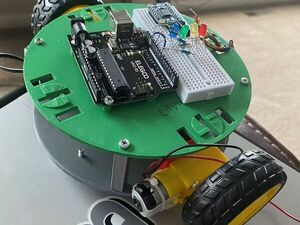
Lily∞Bot Version 2: Open Source Robot for Academics
"This is version 2 of the open-source robot for academics to engage in service, teaching, and research. Meet Lily∞Bot. Story I am an open-source hardware trailblazer and this is part of my guidebook to show academics how to engage in open source hardware for service, education and research in particular in the area of robotics. The first phase is the creation of the Lily-bot for service and education for novice users. The next phase will scale up Lily-bot to Daisy-bot for high school students and college undergraduates (freshmen). This robot will be completely open-course created with 3d prints and off the shelf parts, and modular enough to modify the CAD files to remove and add parts based upon the user’s need." [...]
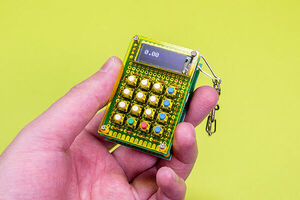
simple_rpn_calc
"Very simple code of RPN calculator for Arduino The aim of this calculator is "anyone can use RPN". So the function is very simple. - There are only 16 keys, numerals(0-9), operators(+-*/), decimal point(. ), and Enter. - Integers can only display up to 7 digits. - Decimals can only display up to 2 digits." [...]

Desktop Weather Display
"I’ve put together a guide on how to build one of these desktop weather displays. If you don’t have a 3d printer, you can buy the 3d printed parts from my shop. If you want a specific colour, ping me a message and I’ll do my best. " [...]

Bootloader In STM32
"Getting to understand how bootloader works and learn how to write two applications in single STM32 microcontroller Bootloader Implementation in STM32 MCU Here I have explained how to write our custom bootloader in STM32. A bootloader is an application whose primary purpose is to allow the systems software that has to be updated without using any specialized hardware such as a JTAG programmer. - The bootloader manages the system's images. - It receives new program information externally via some communication means and writes that information to the program memory of the processor. " [...]
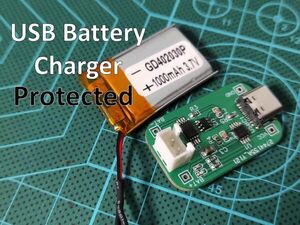
DIY Protected Lithium Battery Charger (TP4056)
"Step-by-Step guide on how Lithium Battery charger circuit works and full assitance for DIY protect charger through USB port. This step-by-step guidance and fully documented article will certainly help you to develop your own Lithium Battery charging circuit with a protective charging output. The Circuit has been designed around the TP4056 chip and some other Integrated Circuits for Battery protection. You can buy this same circuit form several existing webstores but I preferred to Do It myself and this way I can integrate the charging stage in my wearable devices by copy-paste the circuit schematic so you can do the same. " [...]

Dusch-o-Meter
"Track your water consumption and save money with Dusch-o-meter, the smart device for eco-friendly showers. Story Intro This project was developed as part of a course called "Internet of Things Ecosystems" at the University of Applied Science Esslingen. Through this project, students have the opportunity to build their own IoT application from the ground up and gain an understanding of the associated business aspects. Motivation High bills due to prolonged shower times can be frustrating, especially when finances are tight. Long warm showers worsen the situation, especially during the energy crisis. But that doesn't mean that the problem is caused by you." [...]
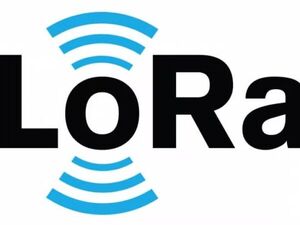
Indoor Positioning by LoRaWAN
"Indoor localisation of objects using LoRaWAN gateways. Our Engineering school Polytech Sorbonne lends equipment (video projectors, computers, etc.) for the teachers and students to use. Sometimes these are not returned on time, which leads to shortage of these objects. We designed a system that tracks the position of different objects, and sends it to a website where the live data can be consulted on a map. Determination of the location In order to determine the location of an object, we use a network of LoRaWAN Gateways." [...]

Citizen Science Badge
"This badge enables automated data collection using a microphone to collect data, and upload it using a cellular module. Citizen Science badge is a multi-sensor PCB meant for citizen science enthusiasts to conduct their own experiments, collect data and upload them to the cloud. In this project, I demonstrate using a microphone to detect common sounds like a coffee machine or an automobile and collect the air quality data. The image below shows the front and back sides of the badge. " [...]

Make Your Doorbell Smart With an ESP8266
"Hello and welcome to this guide! Today let's see how we can turn an ordinary front door bell into a smart doorbell, so a doorbell that's connected to our smart home ans so to our smartphone. This idea came from a problem: in my house the doorbell chime is in the electrical panel with the main switch. The electrical panel has its own door, and it is itself inside a cabinet. So if someone rings the doorbell it can be heard very little, and my idea was to get a notification on the phone when someone rings. This system is very useful for me also because I often build my projects in my garage, so with the notification on my phone I know if someone rings the doorbell while I'm in the garage." [...]
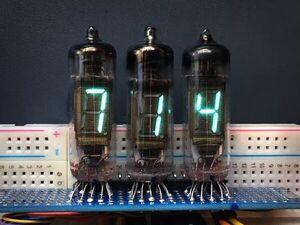
Driving VFD tubes with an Arduino Nano
"A simple method for incorporating vacuum fluorescent display tubes into your projects! I've had a handful of Soviet-made IV-6 (ИВ-6) tubes sitting around my workshop for years, but I never really tried to get them working for any of my projects. But when I recently started restoring a Soviet-made variable transformer, I realized they would would make a good solution for displaying the voltage output level. So I built this driver circuit to get them going, with the idea that it could be applied to a wide range of future projects. I happen to live Tbilisi, Georgia (formerly a part of the USSR), so these tubes are relatively easy to come by, but they are also sold widely on eBay. " [...]

Smart Air Quality Monitoring System
"The aim of this project is to design and implement an air quality monitoring system. This project activates actuators to be able to maintain better air quality around us. This project can be used in our houses, warehouses, and greenhouses. It has a line following the robot on which there is the sensor that measures temperature, humidity, light intensity, and the presence of gas around. Whenever the parameters go beyond the set threshold, it activates an output to try to cancel out the change which is caused. Moreover, the data read is stored in a NodeMCU ESP8266, an IOT module, which is then transferred to the Blynk cloud app." [...]
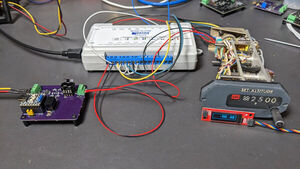
Resolving a Synchro Shaft Angle Using Modern Hardware
"This project uses modern data acquisition hardware to track the shaft angle of a synchro transmitter as the shaft is turned through various angles. How difficult could it be to get the absolute angle of a position sensor from the 1980’s that was originally developed during the WWII era into a modern computer? Turns out, it’s more difficult than it seems, and for most hobbyist applications, more difficult than it’s worth. Read on to find out more. The synchro, like a potentiometer or encoder, is a device for converting a mechanical rotational position into an electrical signal representing that position or a change in that position. Potentiometers are inexpensive and easy to interface to micros with ADCs." [...]
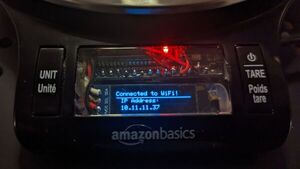
Turning a $10 kitchen scale into a WiFi smart scale for Home Assistant
"Over the years I've seen a few posts on Reddit demonstrating the use of a load cell with an internet-connected microcontroller as a weight-based filament sensor for 3D printing. I decided to embark upon a similar project, retrofitting a $10 kitchen scale. It can be really fun to take an inexpensive product and, with a little bit of DIY magic, enhance its functionality. It's a sense of satisfaction a bit different from that of building something end to end from scratch, but every bit as good. I hopped on Amazon and found an Amazon Basics kitchen scale which at time of purchase was about $10 shipped. The entire scale was actually cheaper than some listings for the same type of discreet 20kg-rated load cell found inside, plus we get a factory made case, scale platform, buttons, etc." [...]
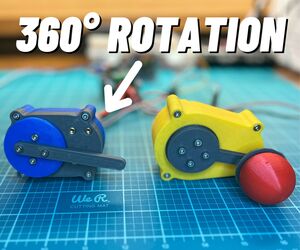
3D Printed Servo Motor
"Most hobby servos are limited to less than 360 of rotation. Let's fix that! In this build, I'll show you how to make a 3D-printed servo motor. Like traditional servos, this servo has position feedback. Unlike a traditional servo, this servo has 3D printed gears, is much faster and stronger, and has 360 of rotation. This is quite a simple build." [...]
Secção Videos
Videos interessantes.
That's all Folks!



